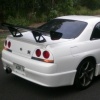Rb30 Tensioner Choices
Announcements
-
Similar Content
-
Latest Posts
-
By GabsReDeal · Posted
Hello everyone, I am from Malta and have recently bought myself a fully stock 1992 Nissan Skyline GTS. It has the RB20DE engine and thus is NA. Unfortunately, not a lot of information can be found online related to the GTS, unlike the information for GTS-T and GTR variants. Apart of the Skyline, I also got a 1984 Porsche 924 2.0l NA and a 2002 Renault Clio 1.5DCi for everyday use. Excited to be apart of the community and perhaps get better information on cars such as the GTS. -
The fuel pump bracket just slides straight up. Below is a pic I stole off a site. But basically put hand in for fuel pump, wiggle it all about a bit while pulling up.
-
Went digging Duncan, there's another "item" that sits down under the plenum that the second pipe from the IACV goes down to. I believe that's the one that is apart of the cold start portion, and it then comes back up under the middle of the factory top plenum. I believe you will find it is unneeded on the forward facing plenum on Cheryl. I just went digging further for some pics on the location of the one way check valve, and found something that confirms my thoughts from the first half of this point. I feel you can just block off that port that is coming down. I can also confirm, the other line that you were thinking for vacuum that will just need a one way valve put into Cheryl is 100% correct too. The one way valve is normally screwed into the back of the factory inlet plenum.
-
The rule of thumb for any GTR thats doing a single turbo conversion is..... seqy... and when i say seqy, i dont mean the pos PPG either. *flamesuit on*
-





Recommended Posts
Create an account or sign in to comment
You need to be a member in order to leave a comment
Create an account
Sign up for a new account in our community. It's easy!
Register a new accountSign in
Already have an account? Sign in here.
Sign In Now